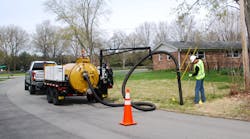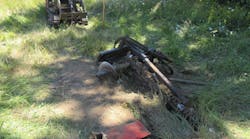The Four Corners area, where Utah, Arizona, Colorado, and New Mexico all meet at one point, has a long and diverse mining history. While some mining has ceased and other operations have cut back, the mining in the area is looking at a strong future with continuation of some existing mines, while other new mines are being opened.
Gold, silver and other metals were actively mined in southwestern Colorado, driving economies in the towns of Durango, Silverton and Ouray starting more than a century ago. The metals mining ended decades ago, and those towns began to thrive on tourism. The old mines and mills were, if not reclaimed, made safe from intrusion by visitors in recent decades.
Likewise, the Crested Butte area near Gunnison, CO, has an old history in silver mining that died out, but the town has been kept alive by the ski mountain and summer tourism. There are many new developments in mining being planned, subject to permitting, in that scenic area.
Uranium mining was strong in Moab, UT, as well as Grants and Gallup, NM, beginning in the 1950s. These mining activities were driven by strong demand to feed nuclear power-generating plants and other facilities such as nuclear-powered U.S. Navy submarines and surface ships. This mining virtually ended in the late 1970s as international sources, such as Australia, could supply uranium at a much lower cost. The mines were closed. Some of these mining companies declared bankruptcy in the face of reclamation costs imposed by the Department of Energy and the Environmental Protection Agency. Most of these mine and mill sites have been or are in the process of being reclaimed under the oversight of those agencies.
Coal mining in northeastern Arizona for power generation has been ongoing by Peabody Energy's Kayenta Mine operation since 1973. The coal has supplied the Navajo Generating Station near Page and is planned to continue until 2026. The Peabody operation has produced 8.5 million tons per year and has injected approximately $2.8 billion into the local economy, including wages, employee benefits, taxes, royalties to the Navajo and Hopi tribes, and charitable contributions. The mine conveyor feeds rail cars, which transport the coal to the power plant. The majority of employees are Native Americans.
Coal mining in northwestern New Mexico has been a major economic factor for decades, supplying two power plants in that area.
The 2009 Mining StatusColorado
In 2008, mining near Silverton saw a new revival and new investment beginning. That fresh start has been driven by the increased market values of gold. Some offices and buildings are in place for the operation near Middleton, northeast of Silverton.
Colorado Gold Fields Inc. has taken the lead with exploratory drilling, acquiring mineral rights, and preparations to reopen the Howardsville Mill. The CGFI 80 percent undivided interests in the Gold King and Mogul Mines are the strong holdings that are a major part of the mining plan for the area. There are rumors of other mining operations in planning or permitting in the area. More will be seen in the months ahead.
In the Crested Butte area, there is real movement toward new mining ventures. "The Red Lady," as Mount Emmons is called, contains one of the best and highest-grade molybdenum deposits known in the world. Thompson Creek Metals Co. Inc. of Toronto is seeking permits to extract about 700 million pounds of the mineral, which is used as an alloy for steel and stainless steel. It is also used in paints. This mining operation is expected to add $800 million to the local economy over a period of years.
The tourism interests and environmentalists in the area are opposing this mining venture. The Thompson Creek commitment is serious, as they have already paid U.S. Energy Corp. of Riverton, WY, for one of two different ownership options that would include U.S. Energy Corp. retaining an equity position.
In 1977, AMAX Inc. became interested and involved on the site. Following that, Cyprus AMAX, Phelps Dodge Corp. and Kobex Minerals Ltd. all became involved, but mining never started. All of this fell apart when the price of molybdenum dropped to about $3 per pound in the early 1980s. In the month of November 2008, the worldwide economic crisis saw the price of the mineral to drop from $21.38 to $12.38 per pound. Those economic factors may also have an impact on the future of the mining operations.
While Colorado's origins were built on mining that drove the economy well into statehood, the current opinion on mining in Colorado is not so favorable. The General Mining Act of 1882 gives mining priority over all other uses on public lands in the West. That is very unpopular in the present Colorado politics. Modern technologies can be implemented to remove the ore with minimal disturbance while meeting environmental rules. The Crested Butte area has been in controversy for over 30 years on the subject of these mine operations. Thompson Creek indicates that extraction of ore is realistically about 10 years in the future. Because of that, current market conditions should not really be a decisive factor. The permitting requests are in process.
Utah
In southwestern Utah, Denison Mines Corp., a Toronto-based company, has been operating the Tony M Mine until recently, when the price of uranium "yellowcake" dropped from a high of $136 per pound to $44 per pound in October 2008.
The Tony M Mine has produced approximately 200,000 pounds of uranium ore per year during its sporadic history going back into the 1980s. While that mine is closing, the company is opening the Beaver Shaft Mine in the same San Juan County in the southeast corner of Utah, where a higher-grade uranium ore has been located. In addition to the higher-grade uranium, the Beaver Shaft Mine has deposits of vanadium, which is used in steel alloys. Early in 2008, the company opened another uranium mine in San Juan County, UT, called Rim Canyon Mine.
Presently, Denison Mines processes the uranium ore into yellowcake at the White Mesa uranium mill near Blanding, UT. International Uranium Corp. of British Columbia bought Denison Mines in December 2006.
Another Canadian firm from Toronto, Uranium One Inc., bought rights in 2007 to a uranium mill and approximately 38,000 acres of mineral claims and leases in the Blanding, UT, area from U.S. Energy Corp.
New Mexico
After almost 30 years since uranium mining in the area ceased, major mining companies are seeking approval to reactivate in the Ambrosia Lake area north of Grants, NM. It is projected that the revival of the mining and milling would bring $30 billion and thousands of jobs into the area.
In early November 2008, the state of New Mexico Mining and Minerals Division issued a permit to Uranium Resources, Inc. to conduct exploratory drilling in an area approximately 20 miles north of Grants, NM. The permitted site of less than 5 acres is believed to contain approximately 1 million pounds of mineralized uranium. URI is looking at the drilling results to determine if the uranium can be mined using an in situ recovery process. The in situ method would result in less surface disturbance and fewer health risks to workers. The uranium extracted with the in situ process would not require a conventional mill. In situ methods have been used in other mining, such as oil-shale extraction.
Coal mining for mine-mouth generating stations has been a continuous and major factor in the area between Farmington and Shiprock since 1963. The mines have been operated as "New Mexico Coal." Utah International was the first mine operator until acquired by General Electric in 1977. BHP acquired New Mexico Coal in 1984 and became a part of BHP Billiton with their merger in 2001.
BHP Billiton operates two very large international divisions, one from Melbourne, Australia, and the other from London, U.K. They are internationally prominent with more than 100 operations in 25 countries, generating revenues of $59.5 billion in 2008 and employing approximately 41,000 persons. BHP Billiton operations include most energy and mineral resources, including diamonds.
Public Service Company of New Mexico operates the San Juan Generating Station, and Arizona Public Service operates the Four Corners Power Plant. These plants are within sight of each other across the San Juan River valley just west of Farmington.
The PNM plant was initially supplied coal from San Juan Mine, a mine-mouth site opened in 1973. Originally an open-cut mine, this mine is now underground accessed by the high wall of the now-closed open cut mine. This underground mine is operated as a single longwall operation to extract sub-bituminous coal producing 9500 Btu/pound. The annual production of the mine is 6 to 7 million tons, and it employs 576 people, most of whom are Native Americans. BHP Billiton supplies PNM.
At the nearby APS power plant, BHP Billiton is supplying the coal from the open-cut Navajo Mine immediately adjacent to the power plant. That mine opened in 1963 and has been a major source of jobs and a strong factor in the local economy. The Navajo Mine currently employs 433 people, approximately 65 percent of them Native Americans.
Both power plants were also supplied coal from the La Plata Mine, an open pit mine a few miles to the northeast, starting in 1986. That mine has now been depleted and closed.
Reclamation at La Plata Mine is under way. The reclamation will include 55 million cubic yards of backfill material, 2 million cubic yards of topsoil, and 1,727 acres of grading and vegetation.
The reclamation design features topographic diversity to enhance plant and wildlife opportunities. Recognizing the inevitable erosion of reclaimed areas, BHP Billiton employs Geofluvial Topography reclamation technologies to minimize the erosion effects for the long-term future.
Arizona
In addition to the Kayenta Mine operation in Arizona mentioned above, Peabody Energy has requested approval from the federal Office of Surface Mining to reopen another mine called the Black Mesa Mine near the Kayenta Mine. There is some environmental opposition to this application; however, the opponents expect that the application will be approved.
The Black Mesa Mine previously supplied only one power plant on the Colorado River in Nevada. The mine was closed over two years ago.
Peabody has not announced a customer for the coal from the Black Mesa Mine. The announcement of the coal-using customer is a necessary part of the permitting process. Peabody is the major employer in an area without communities of any size and limited opportunities.
Other DevelopmentsThe strongest activity of all mining in the Four Corners will continue to be coal for generation of electricity. That is not expected to see any decline, because the power plants consuming the coal supply power locally and into the regional "power grid" that feeds more populous areas, including California.
The early 1980s saw major investments in oil shale in the northwestern part of Colorado by major firms such as Exxon, Mobil and Tenneco. In addition, tar sands deposits near Vernal, UT, were the source of major interest by energy companies. The emergence of OPEC brought the price of crude oil down enough to stop the mining of those alternative energy sources.
As crude oil prices were rising in 2008, there was a resurgent interest in mining these resources; however, the permitting process is long and difficult. In spite of the dramatically lower prices of crude oil at the close of 2008, the permitting process is still active for mining to return.
With the state of the economy at the close of 2008, mining of precious metals is considered questionable due to reduced demand by consumers buying jewelry. While there are other uses for precious metals, this economic factor may cause a delay in the precious metals mining mentioned above.
| Author Information |
| Freelance writer Bruce Higgins retired after an executive career in the New Mexico construction industry spanning more than 40 years. He lives in Farmington, NM. |




